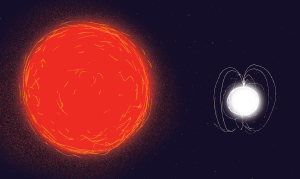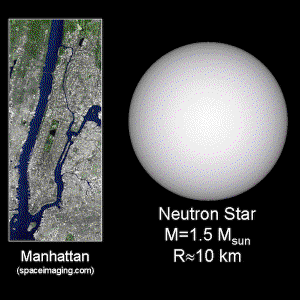Blog
Waking the Dead
7 March 2018
 ESA
ESAEvery star dies. Our Sun will shine for about 5 billion more years, but the time will come when it swells to a red giant for a time, then collapse to become a white dwarf. Larger stars live shorter lives, and can eventually collapse to become neutron stars.
White dwarfs and neutron stars can truly be considered dead stars. Unlike regular stars, they don’t generate heat internally through nuclear fusion. They don’t have active periods with solar flares. They simply cool slowly over billions of years.
 Wikipedia
WikipediaThat is, unless they have a companion star. When two stars orbit each other closely, material from one star can sometimes transfer to the other. This most often occurs when a red giant and white dwarf orbit closely. Material from the outer layers of the red giant can captured by the white dwarf. If the white dwarf captures enough material, it can cause the white dwarf to collapse, triggering a supernova. In principle a similar effect should be possible with a neutron star, where material captured from a red dwarf companion causes the neutron star to be active again. Now this effect has been observed.
As described in a paper1 from Astronomy & Astrophysics, the team observed x-rays emitting from a previously quiet neutron star. The x-rays are generated when the neutron star captures matter from its companion. While this type of interaction isn’t surprising, it demonstrates how dynamic these binary systems can be, and it may help us better understand how these “odd-couple” binaries evolve over time.
Bozzo, E., et al. “IGR J17329-2731: The birth of a symbiotic X-ray binary.” arXiv preprint arXiv:1803.01593 (2018). DOI: 10.1051/0004-6361/201832588. ↩︎